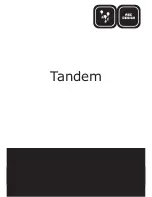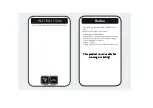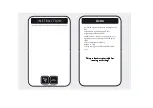
and/or slam-shut device. Due to these
factors additional protections should be
installed to stop flow in the event of a
line break.
Like most regulators, the 299H Series regulators have
an outlet pressure rating lower than its inlet pressure
rating. Complete downstream overpressure protection
is needed if the actual inlet pressure can exceed the
regulator outlet pressure rating or the pressure ratings
of any downstream equipment. Regulator operation
within ratings does not preclude the possibility of
damage from external sources or from debris in the
lines. A regulator should be inspected for damage
periodically and after any overpressure condition.
Clean out all pipelines before installation. Check for
damage which might have occurred during shipment.
Also, check for and remove any dirt or foreign material
which may have accumulated in the regulator body.
Apply pipe compound to the external pipe threads of
threaded bodies or use suitable line gaskets and good
bolting practices with a flanged body. This regulator
may be installed in any position desired as long as the
flow through the body is in the direction indicated by the
arrow on the body. Install a three-valve bypass around
the regulator if continuous operation is necessary during
maintenance or inspection.
Although the standard orientation of the actuator and
pilot to the main valve body is as shown in Figure 1,
this orientation may be changed in 90° intervals by
rotating the actuator lower casing (key 1, Figure 4) and
the elbow fitting (key 19) by 90° and then reinstalling
the cap screws.
To keep the pilot spring case from being plugged or the
spring case from collecting moisture, corrosive chemicals
or other foreign material, the vent must be pointed down
oriented to the lowest possible point on the spring case
or otherwise protected. Vent orientation may be changed
by rotating the pilot spring case with respect to the
pilot body.
To remotely vent the pilot, remove the screwed-in vent
assembly (key 27, Figure 3) from the pilot spring case
and install obstruction-free tubing or piping into the
1/4 NPT vent tapping. Provide protection on a remote
vent by installing a screened vent cap into the remote
end of the vent pipe.
An upstream pilot supply line is not required
because of the integral pilot supply tubing (key 21,
Figure 4). However, as long as the 1/4 NPT tapping
in the main valve body is plugged, this tubing may
be disconnected from the main valve (key 17) in
order to install a pilot supply line from a desired
remote location into the pilot.
If using a control line, attach the control line from
the pilot tap 2 to 3 ft. / 0.61 to 0.91 m downstream of
the regulator in a straight run of pipe. If impossible
to comply with this recommendation due to the pipe
arrangement, it may be better to make the control line
tap nearer the regulator outlet rather than downstream
of a block valve. Do not make the tap near any elbow,
swage or nipple which might cause turbulence. For
optimal performance, use as large of a control line
as practical.
In many instances, it will be necessary to enlarge the
downstream piping to keep flow velocities within good
engineering practices. Expand the piping as close to
the regulator outlet as possible.
WaRning
!
adjustment of the pilot control spring to
produce an outlet pressure higher than
the upper limit of the outlet pressure
range for that particular spring can cause
personal injury or equipment damage due
to bursting of pressure-containing parts
or the dangerous accumulation of gases
if the maximum actuator emergency
casing pressure is exceeded. if the
desired outlet pressure is not within the
range of the pilot control spring, install a
spring of the proper range according to
the Maintenance section.
Each regulator is factory-set for the pressure setting
specified on the order. If no setting was specified,
the outlet pressure is set midrange of the pilot control
spring. In all cases, check the control spring setting to
make sure it is correct for the application.
Registration Conversion
To convert the 299H Series regulators from one type of
registration to another, all that is required is adding or
removing screws and O-rings.
To change an internal registration regulator to an
external registration regulator with a downstream
control line, block the two ports in the throat with
screws and O-rings (J in Figure 2). Remove either the
3/4 NPT pipe plug in the pilot casing or the 3/4 NPT
pipe plug in the lower casing and add a downstream
control line.
7
299H Series






































